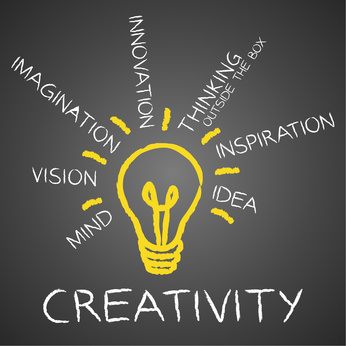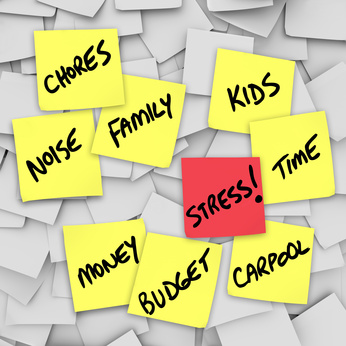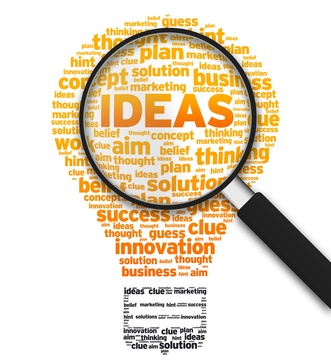What is your problem solving profile?
Which of the following statements is the best fit:
a. Do you believe you are good at dealing with problems?
b. Is your ability to solve problems okay -- not great?
c. Or do you feel uncomfortable when faced with solving problems?
Whether you consider yourself to be an effective problem solver, an average problem solver or a problem avoider, you can boost your problem solving skills. It’s easy and it’s quick.
Before looking at ways to accomplish that, let’s work on the phrase, “problem solving.”
“Problem solver” or “Creative problem solver?”
Problem solving sounds…like a problem. Yet we solve problems – large and small – every day, without turning them into “projects.” It happens naturally. So let’s add spice by adding an adjective. Creative problem solver has a nice ring to it, doesn’t it?
Creativity adds excitement to a potentially boring task. Creativity implies imagination, and imagination draws on curiosity. Curiosity reflects vitality--all are interrelated.
Sadly, most educational strategies omit, even penalize, the creative part of problem solving.
Remember when your biology teacher droned on about diploid, mitosis or blood groups? You knew those concepts would be on the test, so you jotted down notes, highlighted sentences in a textbook, and memorized complex diagrams.
Did this nurture imagination and creativity? Not even close.
But that’s not all that gets in the way. Beliefs can also inhibit these attributes:

4 Myths about Creativity
Myth #1 Only successful inventors, artists, writers… are creative.
Let’s go back to when you were a kid. Children naturally apply their creativity to understand what’s going on in a complicated adult world. And as an adult you can still apply your creativity to understand a complicated world.
Myth #2 Creativity: Either you have it or you don’t.
The ability to solve problems creatively is not a genetic trait, like hair color. The human brain is built for creative problem solving. Everyone has this ability.
It can be enhanced however. Like exercising to strengthen muscles, solving problem processes of the brain can be enhanced through frequent use.
Myth #3 Daydreaming is a waste of time.
Feel guilty about staring out the window when you should be “working?”
Research indicates that during the creative process, like a musical improvisation, the region of the brain responsible for keeping you on track --shuts down. This changeover allows new ideas to flow easily, to intermingle and develop into new combinations.
Myth #4 Creativity cannot be taught, learned or improved.
A competitive athlete whether a cyclist or golfer understands that a whole mix of ingredients goes into success.
Factors such as motivation and attitude, the physical environment, like the type and condition of the fairway, play a pivotal role. Knowledge - the extensive array of pertinent facts – goes hand-in-hand with skill.
The same variables, attitude, environment and knowledge are just as important to enhance creativity and imagination.

Five ways to unlock your creativity to solve problems like stress, better and easier and faster
1. Change a negative attitude
The belief you can accomplish a task is referred to as self-efficacy or self-confidence. Successful problem solving of any type depends on this essential aspect of motivation. It is at the heart of a stressful problem.
2. Improve your mood
Feeling blue can slow you down mentally as well as physically. Studies have confirmed common experience: It is harder for individuals to think creatively when they feel tired, sad, depressed or down.
3. Unlock time constraints
Creative problem solving takes time and commitment. I am constantly surprised at how many clients say that they do not have enough time. Be honest with yourself. Isn’t it possible to adjust what you do and when you do it in order to create more “imagine” time?
4. Take care of yourself.
Enough rest? Essential! Eat right? Absolutely! Relax? A cornerstone of self-care and stress relief.
5. Emotional support
A key reason that brainstorming fails? Participants do not feel safe about expressing feelings and ideas. Ridicule, sarcasm, guilt trips – these stop creative thinking in its tracks.
Personal validation helps too. A social environment that supports individual ideas greatly enhances imagination. There is nothing wrong with a pep talk and encouragement when an idea doesn’t pan out.
In a nutshell:
Creative problem solving is a process everyone can do. Creativity, innovation, imagination – these attributes can be enhanced with a can-do belief, a positive attitude, finding time to be creative, and time for self-care, and being with someone who truly listens without judgment.






 Driving back home after a very tough meeting that required firing an employee, I felt sad. Following an old pattern, I began to think about comforting foods.
Driving back home after a very tough meeting that required firing an employee, I felt sad. Following an old pattern, I began to think about comforting foods.






 Have you ever stopped taking a prescribed medication, or not followed a doctor's recommendation to lose weight or get more exercise? Could stress be getting in the way?
Have you ever stopped taking a prescribed medication, or not followed a doctor's recommendation to lose weight or get more exercise? Could stress be getting in the way?



